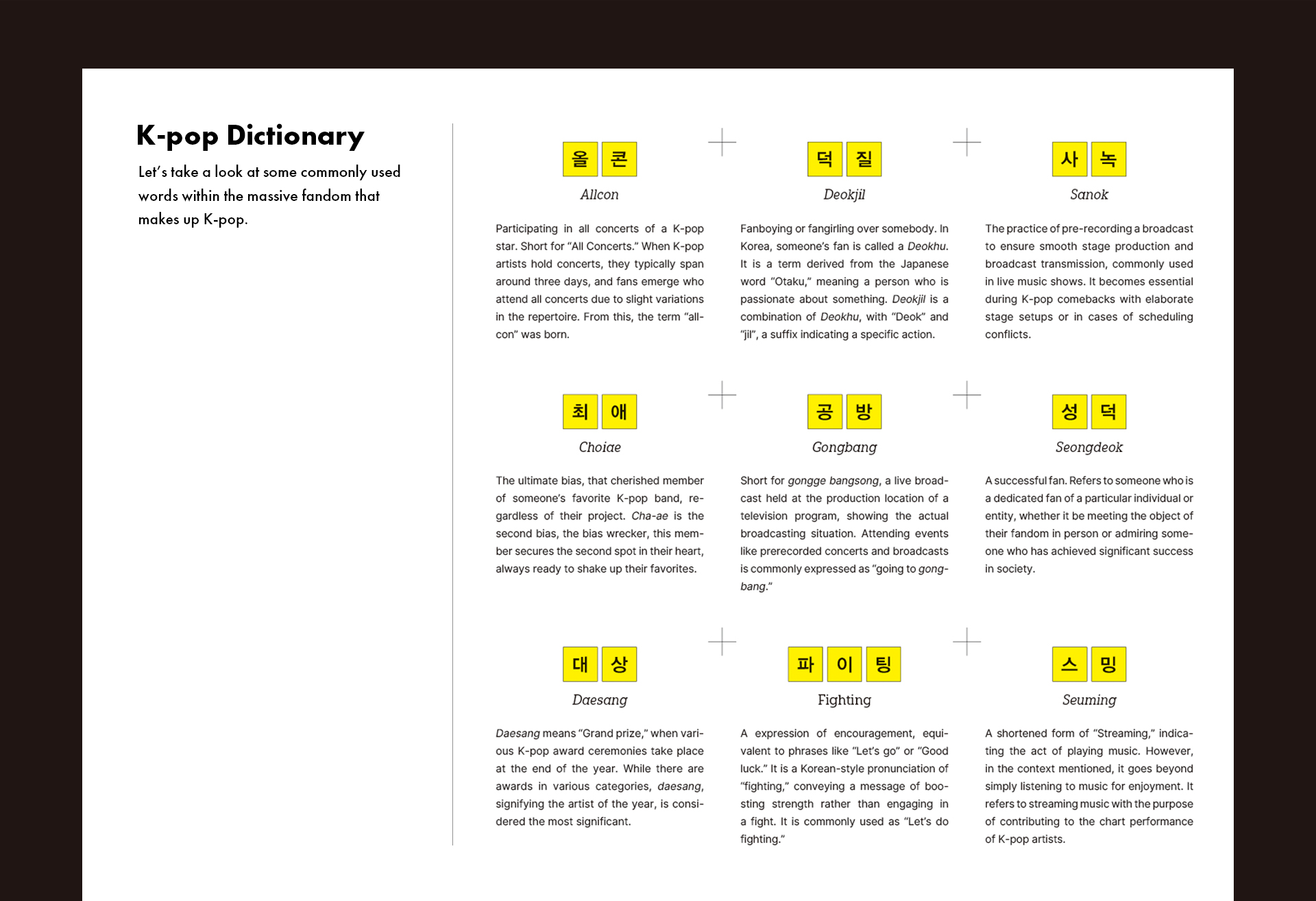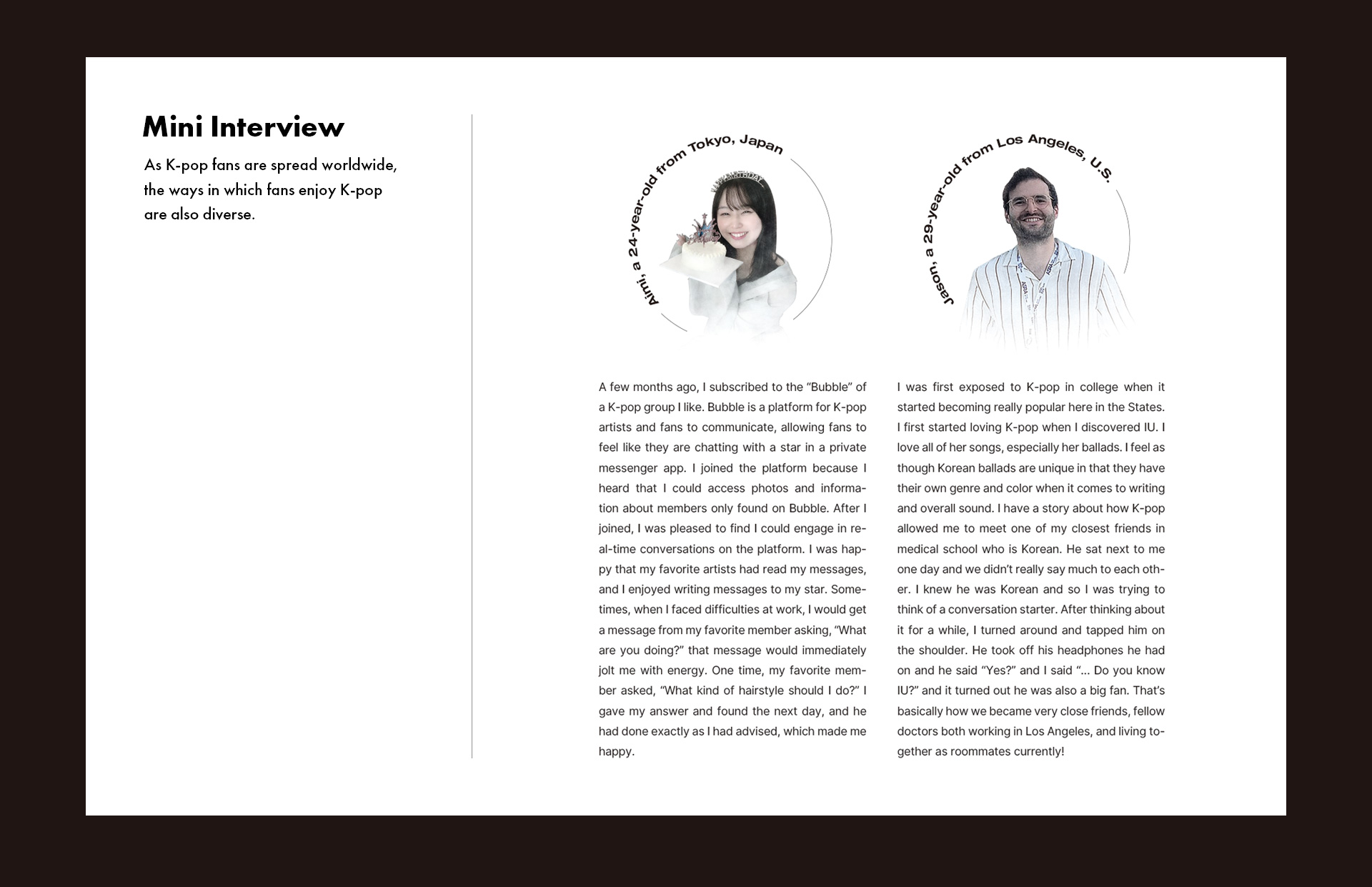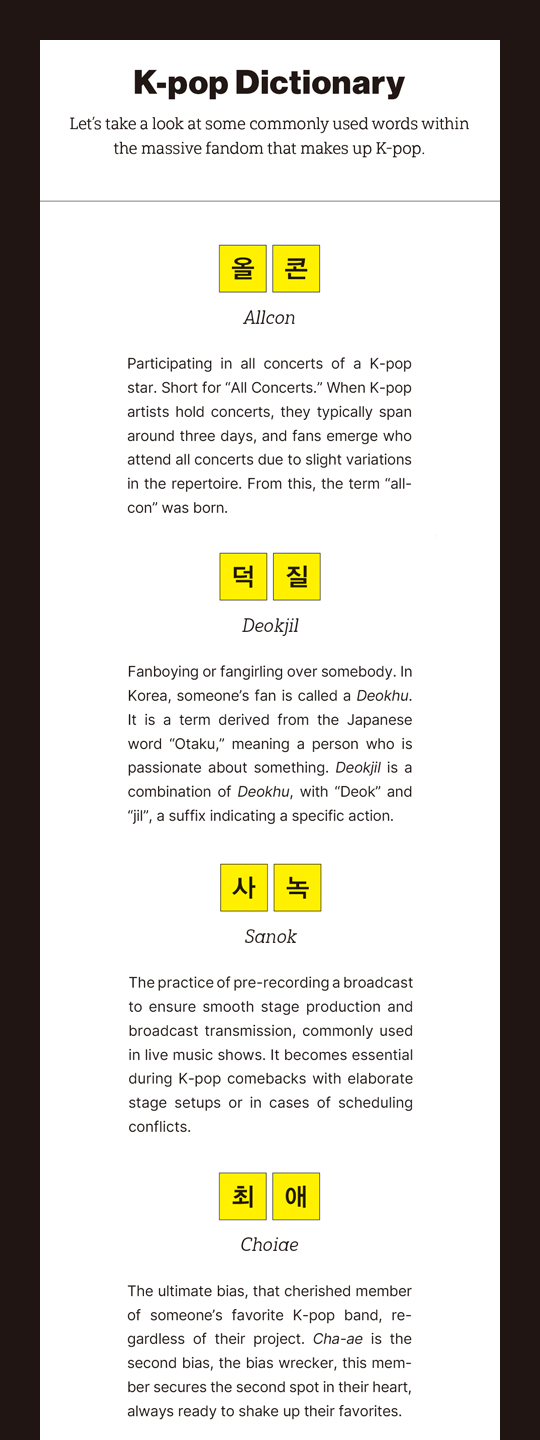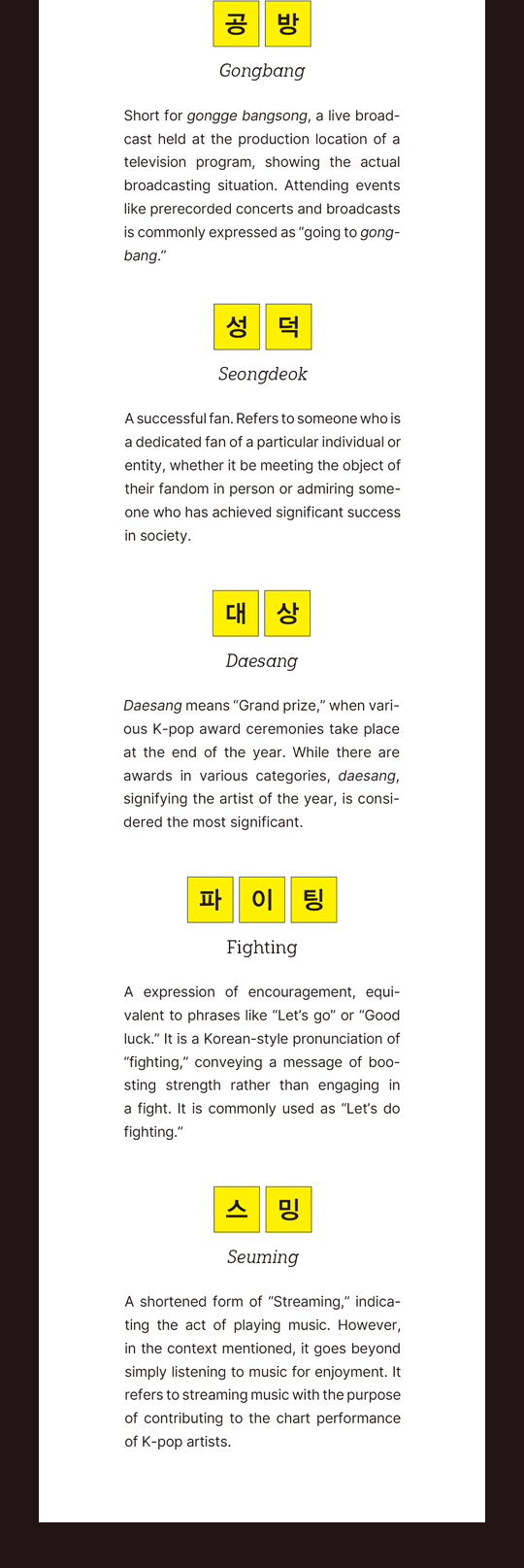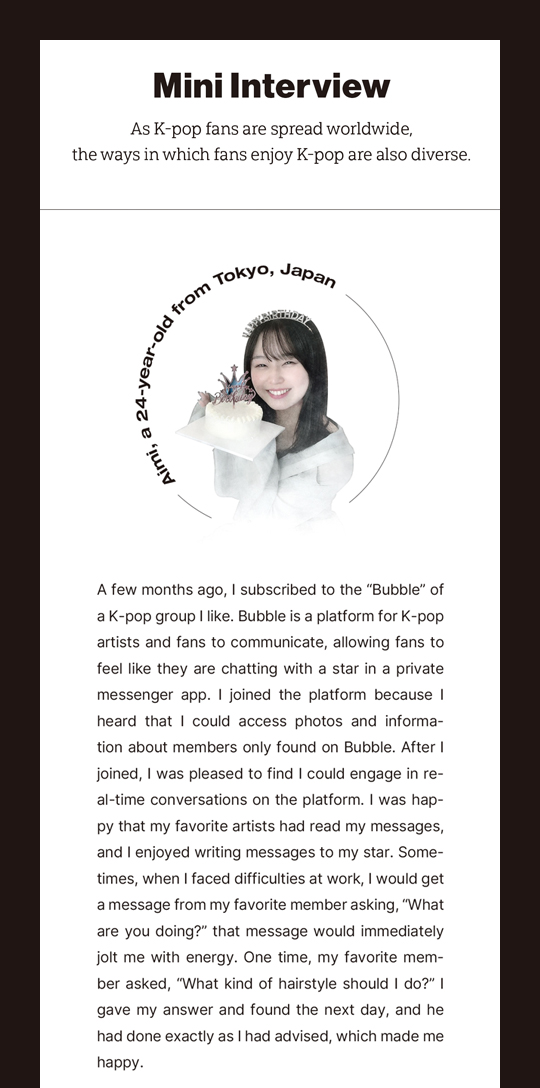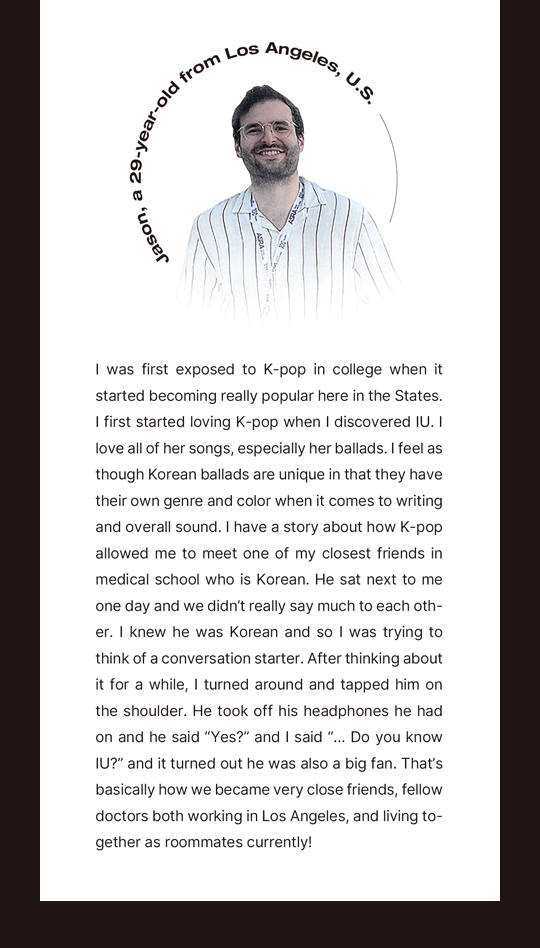“Fandom” is inseparable from K-pop because it has been a major driver for K-pop’s success thus far. It goes without saying that fandom refers to a group that is enthusiastic about something, and all music genres have fandoms. K-pop fandom, however, is different from ordinary fandoms. K-pop fandoms aren’t just consumers of K-pop-related products; they show complete and unwavering support for their preferred artists and are more akin to “partners” of K-pop stars. This shows how different K-pop fandoms are compared to fandoms of other music genres. In this article, we’ll explore the culture of K-pop fandom, an unprecedented group of fans who love K-pop more than anyone else.
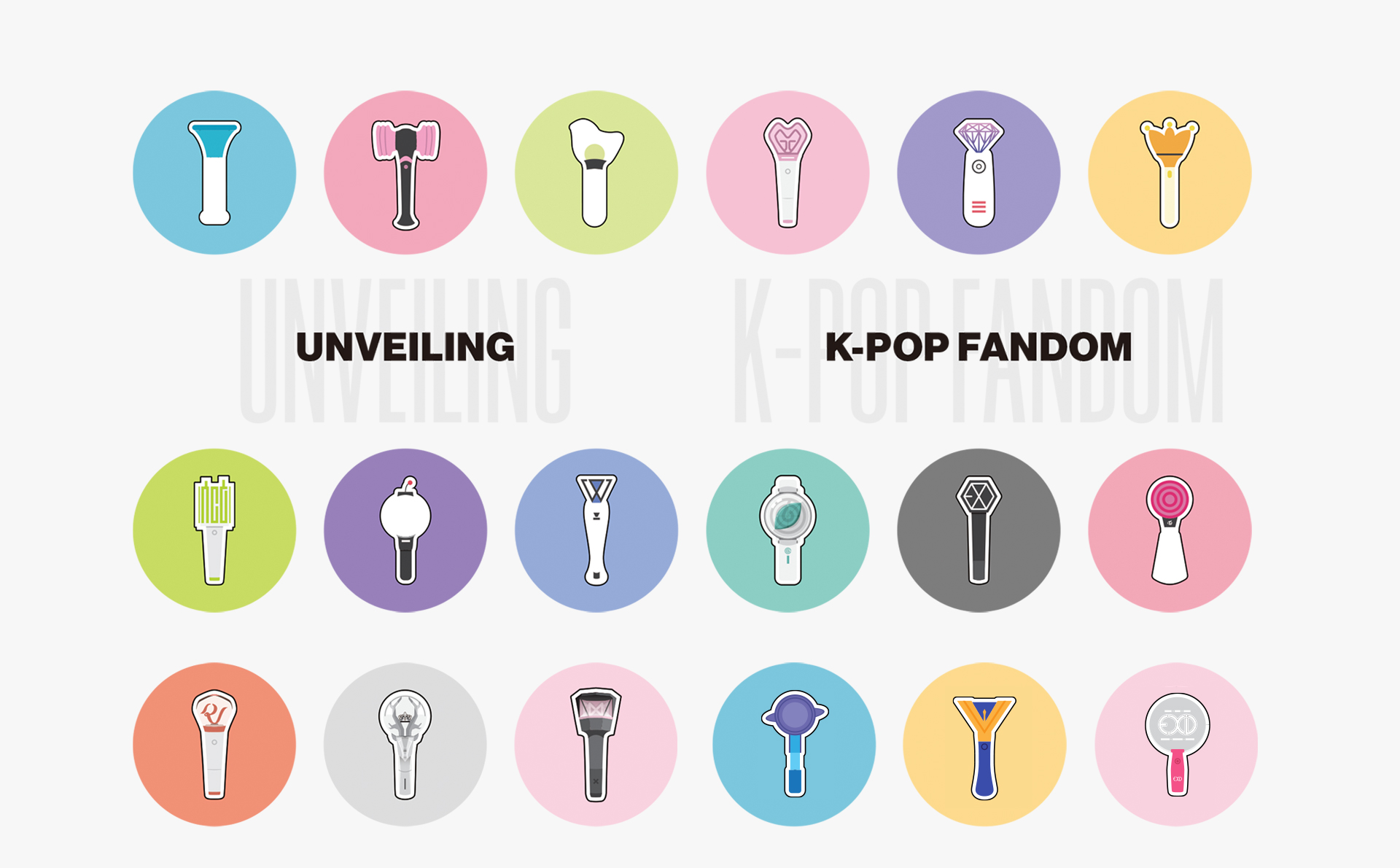
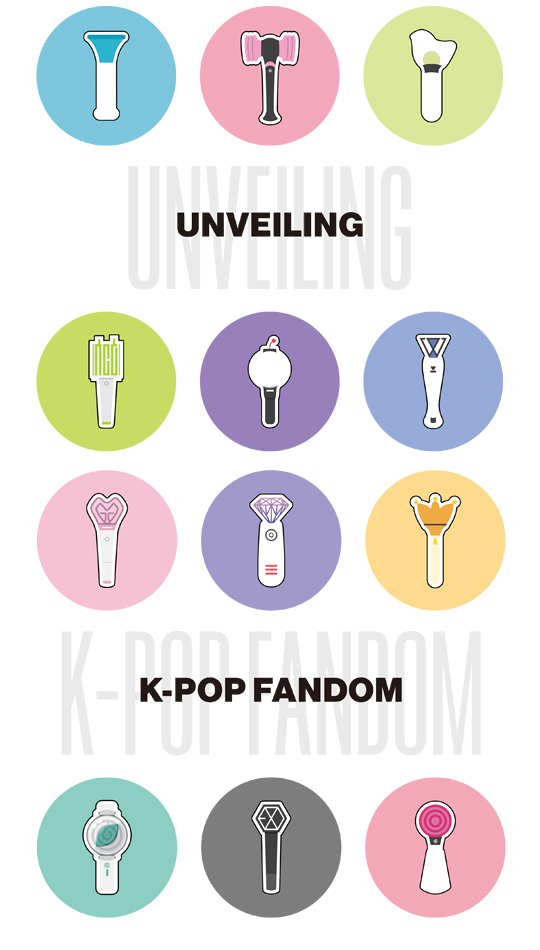
Writer. Kim Da Un
A Must-have for Fans:
Cheer Sticks
At the heart of K-pop fandom history have been “products,” particularly “cheer tools.” These tools have gone through several changes. In the long gone past, these tools were pickets made by fans themselves; up until the 2010s, the main tool became balloons of various colors. Now, cheer sticks are the most popular cheer tools. Cheer sticks have become more than just things to cheer on artists; they have their own culture as well.
What, then, makes K-pop cheer sticks different from ordinary cheer sticks? First and foremost, the cheer sticks come in a wide range of shapes, from those shaped like hammers and flowers to others shaped like dumbbells, bombs and radishes. Fandoms choose their cheer sticks to reflect their own personalities. They may place stickers on them, put clothes on them, or even place figurines inside those cheer sticks that have openable tops. In fact, people even share on social media ways to decorate cheer sticks so that they look like their favorite K-pop artists.
It’s also interesting to note that cheer sticks have become part of the “Internet of Things.” Organizers of performances can remotely adjust cheer sticks based on someone’s seat number, which is entered into a smartphone application connected to the sticks. This allows organizers to change the colors of a maximum of 65,000 cheer sticks all at once; this sight-to-behold is what makes K-pop concerts so mesmerizing. Additionally, cheer sticks equipped with motion sensors can blink at different rates depending on how fast they are whirled about. All this shows that K-pop cheer sticks aren’t static things but continue to be developed.
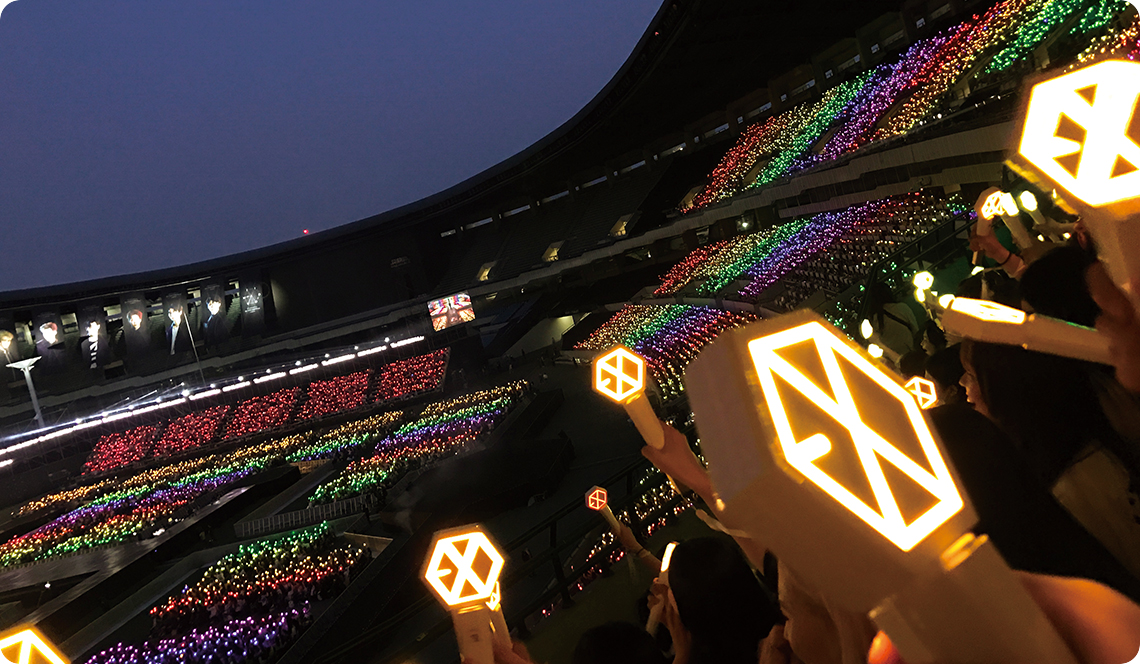 K-pop cheer sticks equipped with Bluetooth create a spectacular scene by coordinating different colors for each section through centralized control. ©KCC in Hong Kong, Photo by TSANG TSZ YING
K-pop cheer sticks equipped with Bluetooth create a spectacular scene by coordinating different colors for each section through centralized control. ©KCC in Hong Kong, Photo by TSANG TSZ YING
Showing Devotion Through Donations
In Korea, it is common to see fans of particular stars or famous people support those who need it rather than gift accessories, clothes, and food to K-pop artists. In the early stages of the donation culture, fans who donated rice at concert venues instead of a wreath used once and then discarded it. Fandoms also collected certificates showing they had donated blood and would hand them over to those who needed them.
Recently, K-pop fandoms have conducted a wide variety of donation-related activities. Some people create forests under the name of a particular artist, while others collect large amounts of money for donation purposes. Fandoms also frequently meet offline to provide help where needed, from caring for animals and handing out free food to volunteering at daycare facilities for children and older people.
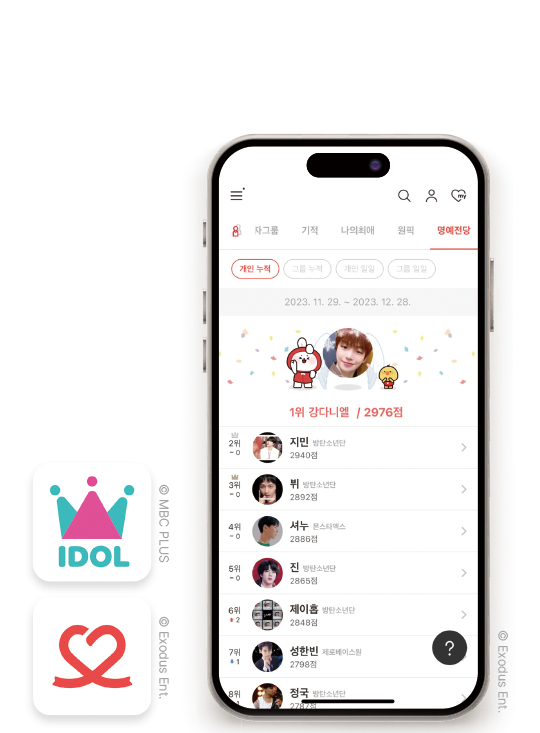 Mobile apps where you can engage in idol-related voting, fundraising and more:
Mobile apps where you can engage in idol-related voting, fundraising and more: IDOL CHAMP (above) and CHOEAEDOL (below).
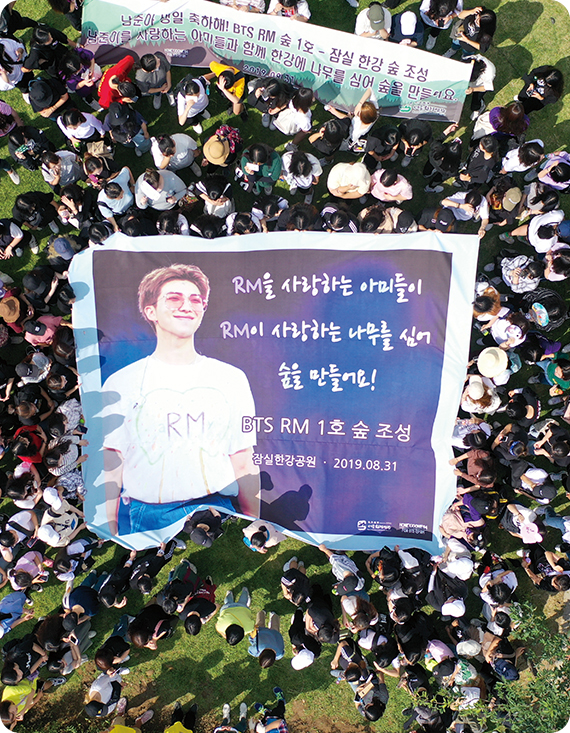 In celebration of BTS member RM’s birthday, his fans made the ‘RM Forest’ in Seoul.
In celebration of BTS member RM’s birthday, his fans made the ‘RM Forest’ in Seoul.
